 NATURE WALK
NATURE WALK
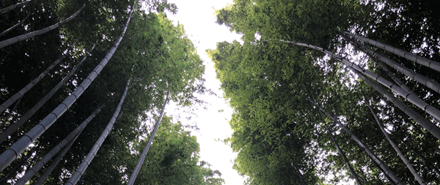
Start walking from Arashiyama Bamboo grove, along the Katsura River and pass by the farmed fields down to my home. In my home, enjoy a short tea ceremony, Koto music and Kimono.




Kyoto has a long and colorful history that goes back more than 1,200 years. It was the imperial capital of Japan from 794 to 1867. There is no city in Japan that has a richer and longer cultural history.
Would you like to enjoy Kyoto in a relaxing way with an English-speaking guide? There are many wonderful places in Kyoto like Kinkaku-ji Temple (Golden pavilion) and Kiyomizu Temple. In addition to those famous places, I can also take you to some good unknown spots. Enjoy the ride without worry about language with me!
 Close up KYOTO
Close up KYOTOThere are many wonderful places in Kyoto like Kinkaku-ji Temple (Golden pavilion) and Kiyomizu Temple. In addition to those famous places, I can also take you to some good unknown spots.
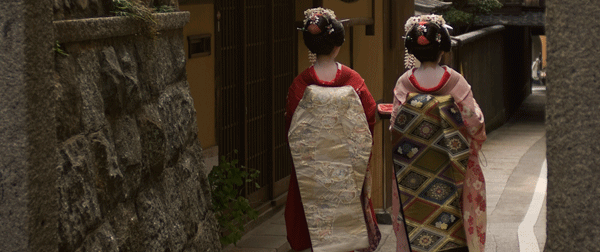
There are many wonderful places in Kyoto like Kinkaku-ji Temple (Golden pavilion) and Kiyomizu Temple. In addition to those famous places, I can also take you to some good unknown spots.

This is the setting for the novel, Memoirs of a Geisha. If you are lucky, you may see a geiko or a maiko (apprentice geiko). After appreciating this unique Kyoto area, how about visiting Kiyomizu Temple and looking at the shops along Sanneizaka area, one of the most popular and attractive places in Kyoto.
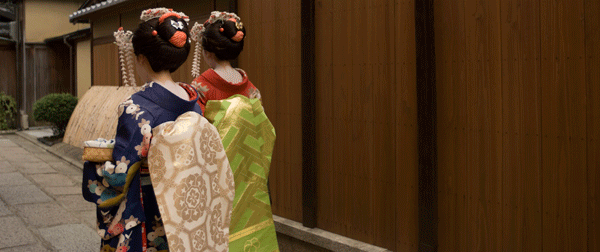
Gion
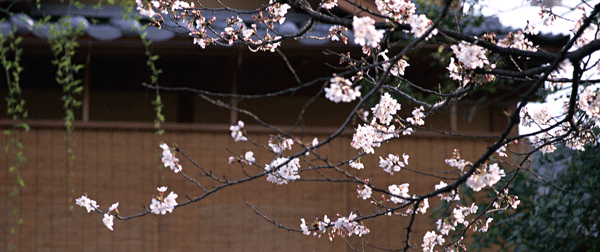
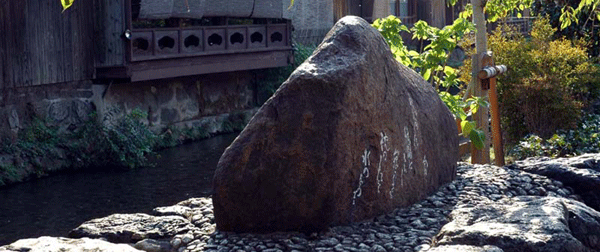
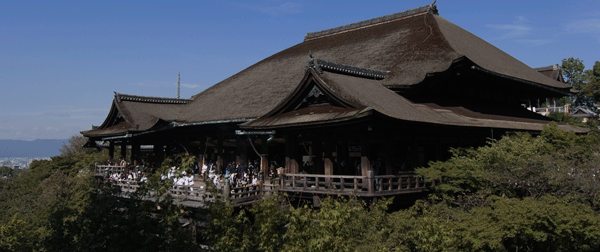
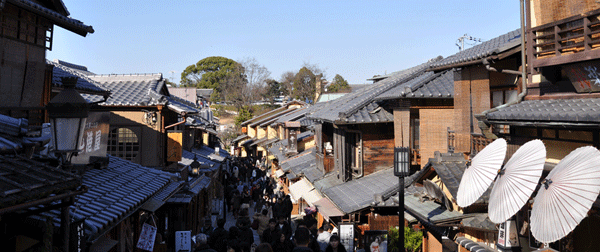
This temple is famous for sliding door paintings by one of the Kano School artists, Tan-yu Kano, and karesansui dry landscape garden by Enshu Kobori from the 17th century. On the south of the temple ground stands a pretty arched water channel made with red bricks. This is one of the most popular cherry blossom viewing spots in spring.
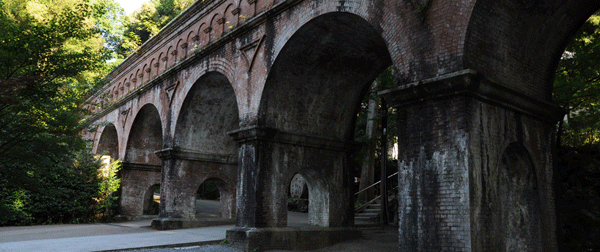
Water channel
The castle (UNESCO World Heritage Site) was built in 1603 under the commission of the first Tokugawa shogun, Ieyasu. It was also the place where the last Tokugawa shogun, Yoshinobu, returned the ruling power of the nation to the emperor in the late 19th century. Both inside and outside of the castle have a number of gorgeous artistic decoration from the Momoyama Period including sliding door paintings by Tan-yu Kano, stroll style garden with pond, Ninomaru Garden, designed by Enshu Kobori and many exquisite wood carvings. The garden is home to about 130 plum trees and 400 cherry trees.
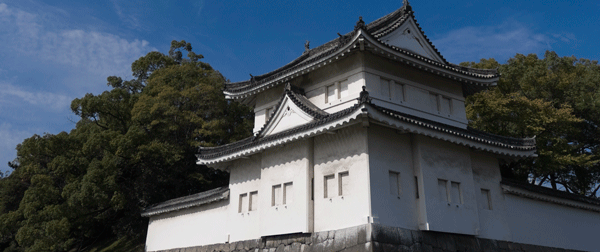
Nijo Castle
The Kyoto Imperial Palace, located on the center of the city, is the place where imperial families and nobles had their residences. After the imperial base was moved to Tokyo, the ground has become a lovely public park for everyone with nice lawn spaces and forest.
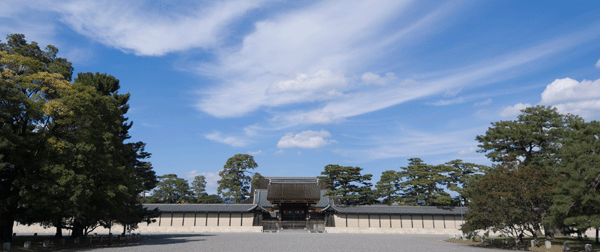
Kyoto Imperial Palace
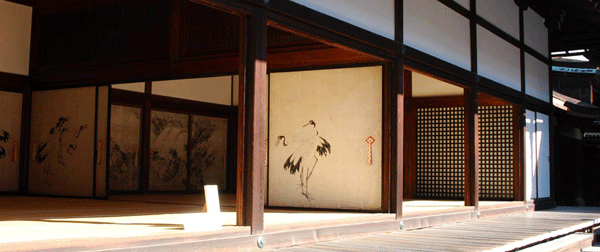
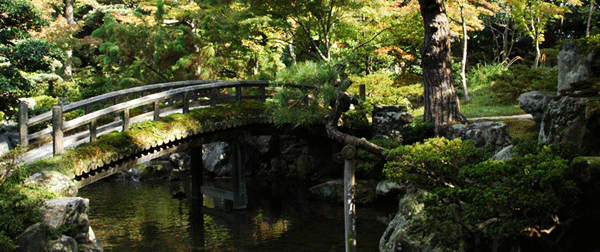
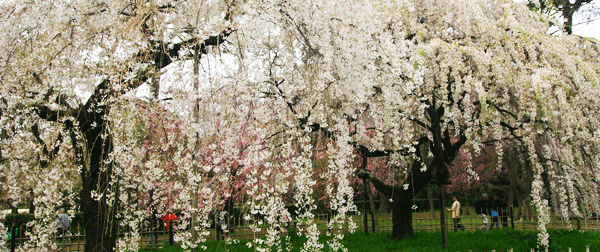
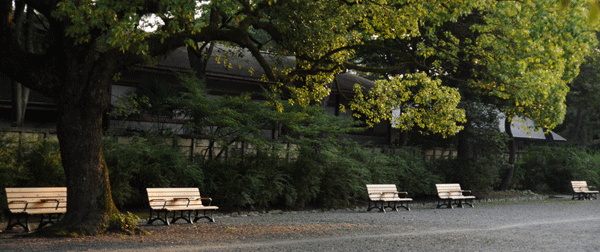
Anyone will be stunned with an amazing view in the main hall of this temple - as many as 1001 statues of Buddha in the one hall. Particularly noteworthy are 28 Buddha standing on both edges and famous statues of the Wind and Thunder Gods.
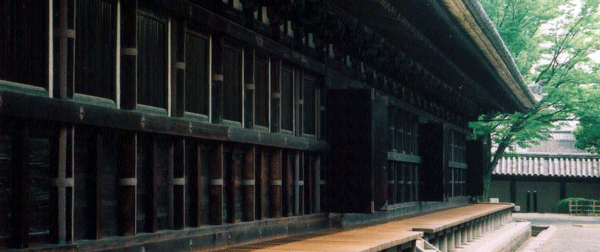
Sanjusangen-do Temple
The brilliant and shining golden figure of this temple will amuse everyone's eye. Reflection of the figure on the nearby pond is also beautiful. Another internationally-known attraction in this area is Ryoan-ji Temple's dry landscape garden. This simple Zen style garden consists of only white gravels and 15 rocks which represent Buddhist ocean and mountains. Unique beauty of Zen aesthetics impressed international V.I.P. like Queen Elizabeth of U.K.
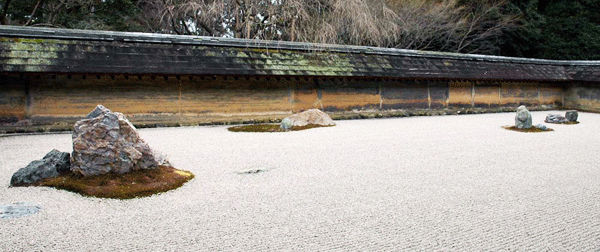
Ryoan-ji Temple
Arashiyama and Sagano area is Kyoto's best site for cherry blossom in spring and colored leaves in autumn. The symbol of the area is Togetsu Bridge (lit. ''Moon Crossing Bridge''), which Emperor Kameyama named in the 13th century. A beautiful path surrounded by bamboo forest connects between Nonomiya Shrine and Okochi Sanso Villa.
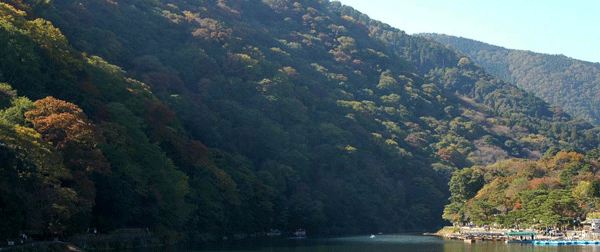
Arashiyama
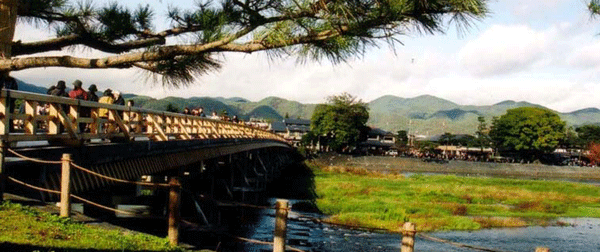
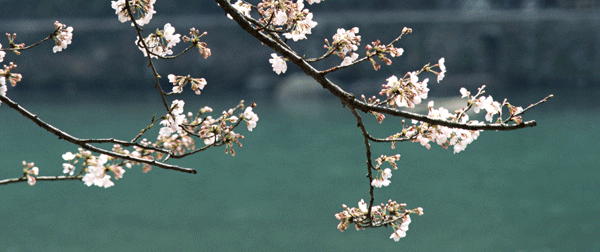
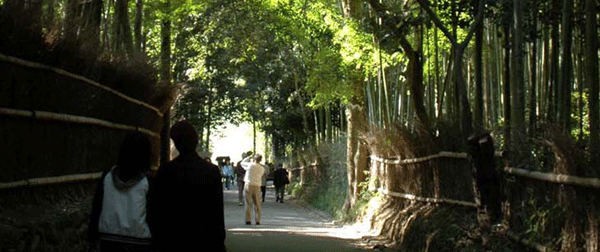
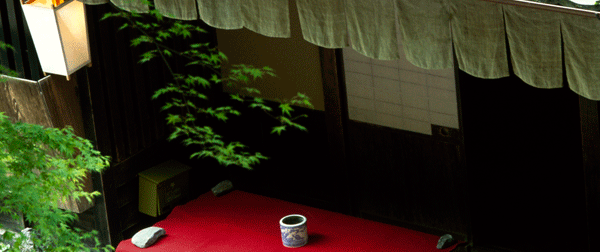
Tenryu-ji Temple is one of Kyoto's Unesco World Heritage Sites as well as Japan's first national scenic beauty site. Having Mount Kameyama and Mount Ayashiyama on its backdrop, the vast garden designed by Muso Soseki incorporates a large pond. Both elegance of imperial atmosphere and simple Zen style is assimilated are represented in one garden. Seasonal flowers and plants amuse visitors' eyes in all seasons. Tenryu-ji Temple offers Zazen meditation experience which head monk will give an instruction in English. After Zazen meditation experience, Visitors can enjoy a bowl of matcha green tea viewing beautiful Japanese garden. Please enquire for details.
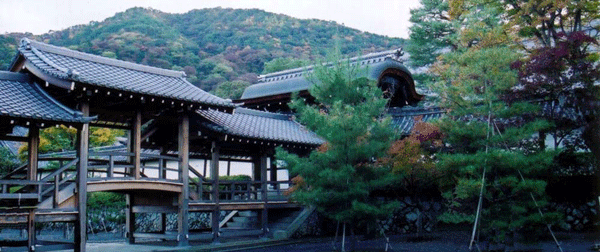
Tenryu-ji Temple
This temple is home to a famous painting of dragon by Tan-yu Kano in the 17th century. Curiously, the dragon catches people's eye no matter which direction they see it. One of the sub-temples, Shunko-in Temple, possesses many important religious assets, particularly Christianity, including the bell of Nanban-ji Temple (Kyoto's first Christian temple) and sliding door paintings with hidden Christian symbols.
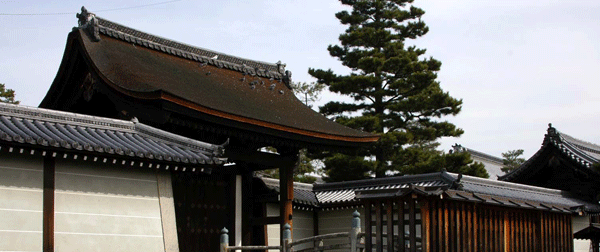
Myoshin-ji Temple
Daitoku-ji Temple complex is home to a number of important cultural properties. One of the sub-temples, Koto-in Temple, presents stunning view of the approach surrounded by bamboo and maple trees as well as the shoin building which old residence of Sen no Rikyu (founder of tea ceremony) was moved. Visitors can enjoy a bowl of matcha green tea viewing beautiful Japanese garden. Another sub-temple, Zuiho-in Temple, has an excellent example of a karesansui dry landscape garden. Seven rocks, set one the white gravel ground, form the Christian cross.
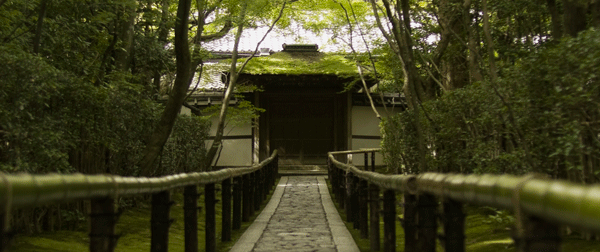
Koto-in Temple (One of the sub-temples)
Kamigamo Shrine is Kyoto's oldest shrine. The official name is Kamowake Ikazuchi Shrine which represents the deity of thunder (ikazuchi). May 15th is the day that one of Kyoto's three largest-scale festivals, Aoi Festival, is held at this shrine. Other important Shinto ceremonies and rituals are held occasionally. In the shrine precinct stand two beautiful cherry trees, Saio Sakura and Gosho Sakura.
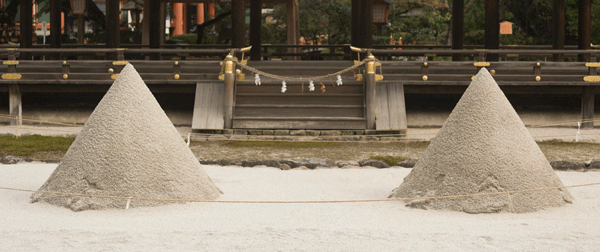
Kamigamo Shrine
Driving a little away from the central city area will take you to the idyllic Ohara area where nostalgic rural life of Kyoto is still alive. Historical temples and shrines nestle in the tranquil region blessed with natural environment. Rivers run through the area and breeze from the mountain brings coolness even in summer. Sanzen-in Temple hosts brilliant garden with moss and cedar trees, Ojo Gokuraku-in Temple and bush of over tham 3,000 hydrangeas. Look for pretty stone Buddhist statues lying on the moss carpet somewhere in the Yusei-en Garden.
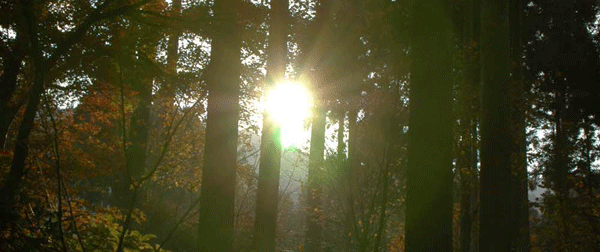
Ohara
Tofuku-ji Temple is a popular tourist site for colored leaves in autumn, especially, the view from the Tsuten Bridge is breathtaking. The fresh green leaves of some 2,000 maple trees create refreshing scenery in the early summer. The temple is home to unique Japanese gardens (north garden of Hojo building and karesansui dry landscape garden) designed by Mirei Shigemori, one of Japan's most renowned garden designers.
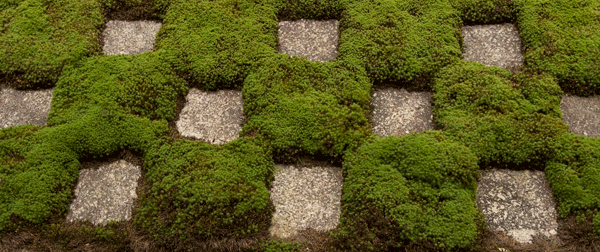
Tofuku-ji Temple
Byodo-in Temple is located in Uji, south of Kyoto City which is famous as one of Japan's best green tea production regions. The Ho-o-do Hall is very familiar with people as it is inscribed on the 10-yen coin. In the Hosho-kan Museum displays the 52 statues of Bosatsu. Each statue is different as dancing and playing music instrument, which represent elegant world of the Buddhist Pure Land.
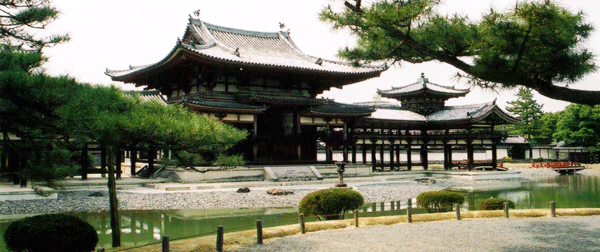
Byodo-in Temple
Visiting this shrine is absolutely amazing experience - walking up to the shrine, visitors will go through thousands of torii shrine gates which makes people feel as if they are entering a mysterious another world. The air is fresh on the top of the mountain and grand view of the city will be enjoyed. This shrine, enshrined as the deity of good harvest, has become particularly popular among foreign tourists in recent years.
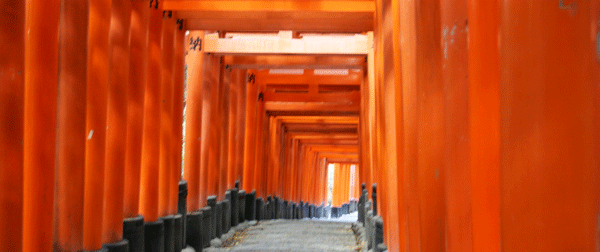
Fushimi Inari Shrine
Visiting historical temples and shrines, learning about Zen philosophy visiting gardens... Here are some of my recommended tour courses.
The most recommended route is: Gion and Kiyomizu Temple, Nijo Castle, Kinkaku-ji Temple and Ryoan-ji Temple, Arashiyama and Sagano




Ohara and Arashiyama in the city are recommended. A longer drive will bring you to the beautiful Miyama region. Miyama is one of the best regions to enjoy Japan's rural scenery.
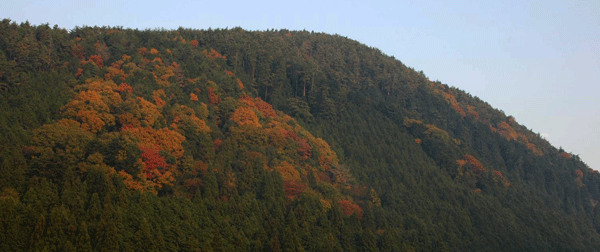

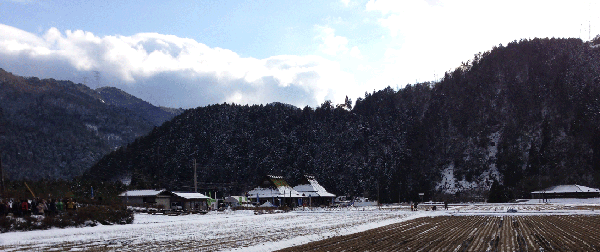
There are a number of great places for cherry blossoms in Kyoto. Please tell me your preference first and I will take you the best one. Except for cherry blossom in spring and colored leaves in autumn, I can also take you to seasonal best spots, for example, plum blossom in February and March, azalea in May and hydrangea in June… Kyoto is always full of seasonal natural attractions.

There are some places in the city where visitors can try Zen meditation with English instruction. To appreciate Zen art and beauty, Ryoan-ji Temple, Tofuku-ji Temple, Daitoku-ji Temple and Tenryu-ji Temple are also recommended as they have superb karesansui dry landscape garden.
I will take you to a kimono rental shop. You can choose your favorite design and the staff will dress you in kimono beautifully. Many of my customers loved to visit Gion and Nijo Castle dressed in kimono!
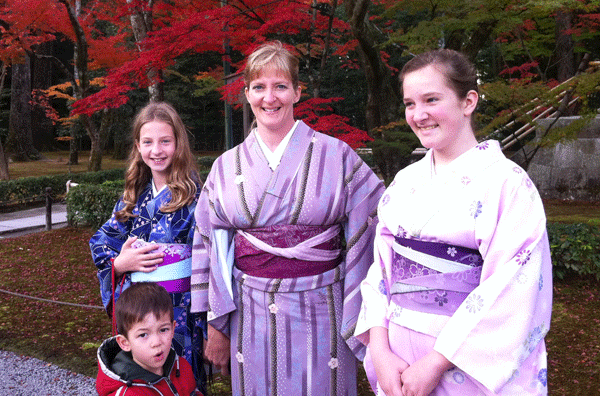
How about trying and experiencing the Tea Ceremony? Doi Taxi will guide you to the world of profound Japanese hospitality through a bowl of tea. Relax and try it at your own hand and senses. Please enquire for details.
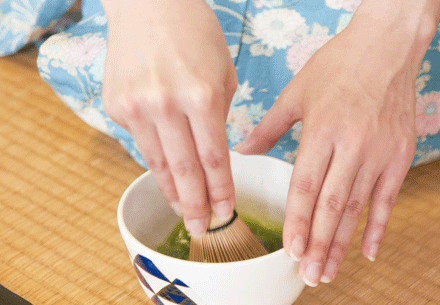
Why not try a traditional Japanese clothing, kimono, in Kyoto?
Choose from over 400 options and the staff will dress you in kimono beautifully. The one-day kimono rental is from 2,500 yen. Please enquire for details.
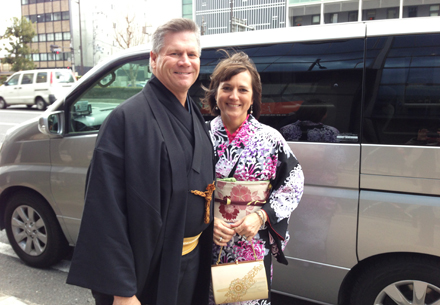
Yumeyakata Web Site >>>